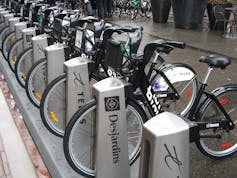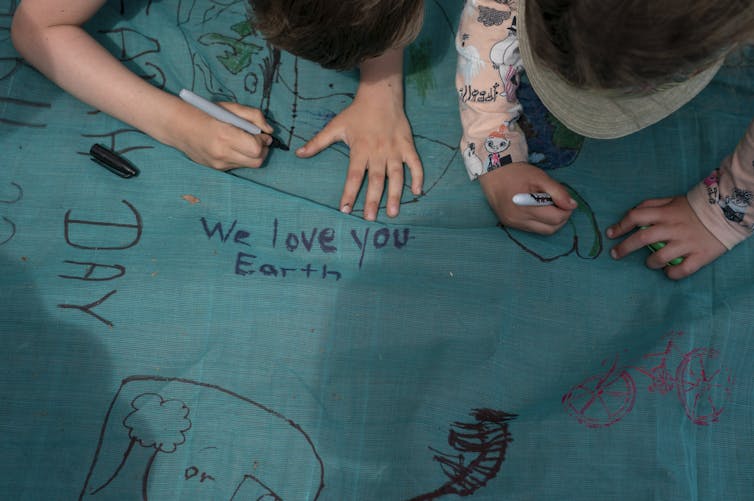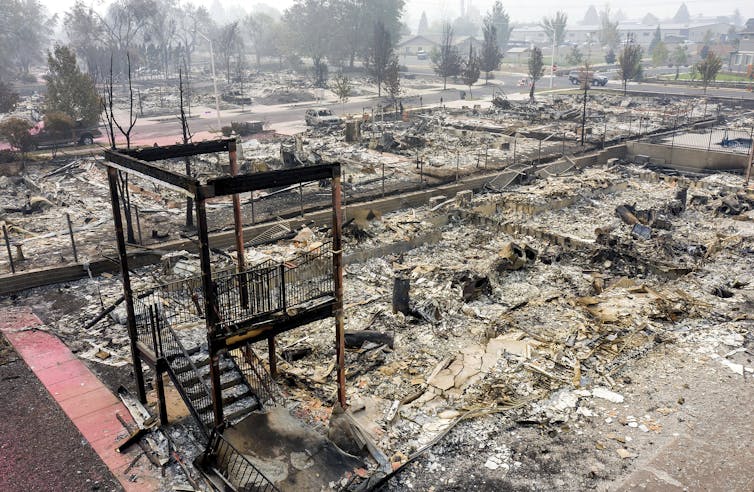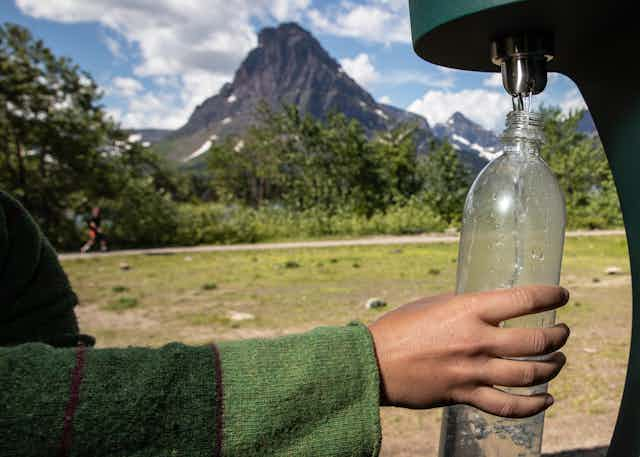This year, organizers of Earth Day are calling for widespread climate education as a critical step in the fight against climate change.
A new report, released in time for global attention for Earth Day on April 22, highlights the impact of climate education on promoting behaviour change in the next generation.
Despite people’s deep connection to their local environment — whether it’s blackouts in Toronto caused by raccoons, communities gearing up for a total solar eclipse lasting only minutes, chasing northern lights or hundreds of Manitoba kids excited about ice fishing — there remains inertia in climate action.
Sparking global momentum and energy in young people can go a long way to addressing climate change now and in the near future, says Bryce Coon, author of the report and Earth Day’s director of education.
How knowledge becomes ingrained
Educators aspire to prepare learners for the global challenges of the times. Teachers have become increasingly concerned about best practices for supporting their charges as young people express anxiety about environmental futures.
In his report, Coon outlines the benefits of climate education, starting with supporting educators to impart “green muscle memory” — habits, routines and attitudes young people develop to perform eco-friendly actions repetitively and consistently. This, he notes, contributes to alleviating climate-related despair and anxiety.

Similarly, Finnish researchers use biking as an analogy to describe the process by which knowledge becomes ingrained in people’s memory. Just as all of the parts of a bike need to work together for the bike to ride smoothly, so does climate education need to draw upon many different components for climate education to effectively influence new habits. The bike model advocates ways of learning that consider knowledge, identity, emotions and world views.
Young people have come to flex their green muscle memory when they load reusable water bottles each day. That small action has become a part of the daily routine for millions of families, and when added together reduces plastic litter.
According to a 2022 survey by the Canadian charity Learning for a Sustainable Future (LSF) and Leger Research Intelligence Group, Canadians have increased awareness of climate change and have become concerned about climate action.
Many believe governments should do more, including making climate education a priority. The survey received responses from 4,035 people including educators, students and parents. More than half of the survey respondents were from Ontario (25 per cent) and Québec (29 per cent).
Challenges with climate education
However, inclusion of climate education in formal school curricula has come with its own set of challenges.
In the survey, 50 per cent of educators nationally agreed that a lack of time in their course or grade to teach the topic of climate change is a barrier. Educators in Ontario reported a lack of classroom resources as a barrier when integrating climate change education within the curriculum.
Read more: 6 actions school systems can take to support children's outdoor learning

Evidence is building about the benefits of implementing and expanding climate education. A 2020 American study documented how students enrolled in a year-long university environmental education course reported pro-environmental behaviours after completing the course.
Extrapolating the impact on learners to a wider scale, the researchers argued scaling climate education had the potential to be as effective as other large-scale mitigation strategies for reducing carbon emission, like solar panels or electric vehicles.
More recently, research has demonstrated the value of how learning in climate education can lead youth to seek green choices, take green action and make green decisions. The United Nations has declared climate education “a critical agent in addressing the issue of climate change” as climate education increases across different settings and for various age groups.
Educators finding ways
More and more educators are taking steps to find ways to teach climate education in schools. Emily Olsen, an educator and now a doctoral candidate at Penn State University, began to explore climate education in greater depth after surviving the Almeda wildfire in Oregon that claimed her fiancé’s family home.
This wildfire’s severity can most likely be attributed to drier-than-normal conditions brought on by climate change in her then-town of residence.

Due to Olsen’s lived experience, developing community resilience to the effects of climate change influences her approach to studying climate education. As an instructor for several undergraduate-level courses, Olsen focuses on equipping budding educators with the skills and knowledge to incorporate climate education in their classrooms.
Read more: Wildfires in Alberta spark urgent school discussions about terrors of global climate futures
All aspects of curricula
Embedding climate education into all aspects of curricula can take a variety of approaches in and outside of the classroom.
In mainstream public education, climate education is becoming more common in Canada, but there is variation across provinces and territories. Environmental education has been packaged in different forms, including broadening school curricula with inclusion in science, but also subjects including English, math and art.
Teacher training as well as complementary programming is also being offered to meet demand.
Integrated education that taps into the “heart, head and hands” of young people can spread behaviour change at a broader level. Educators might find other opportunities, such as with climate-related challenges, experiential learning and project-based learning, all of which can have lasting impacts and promote behaviour change.

